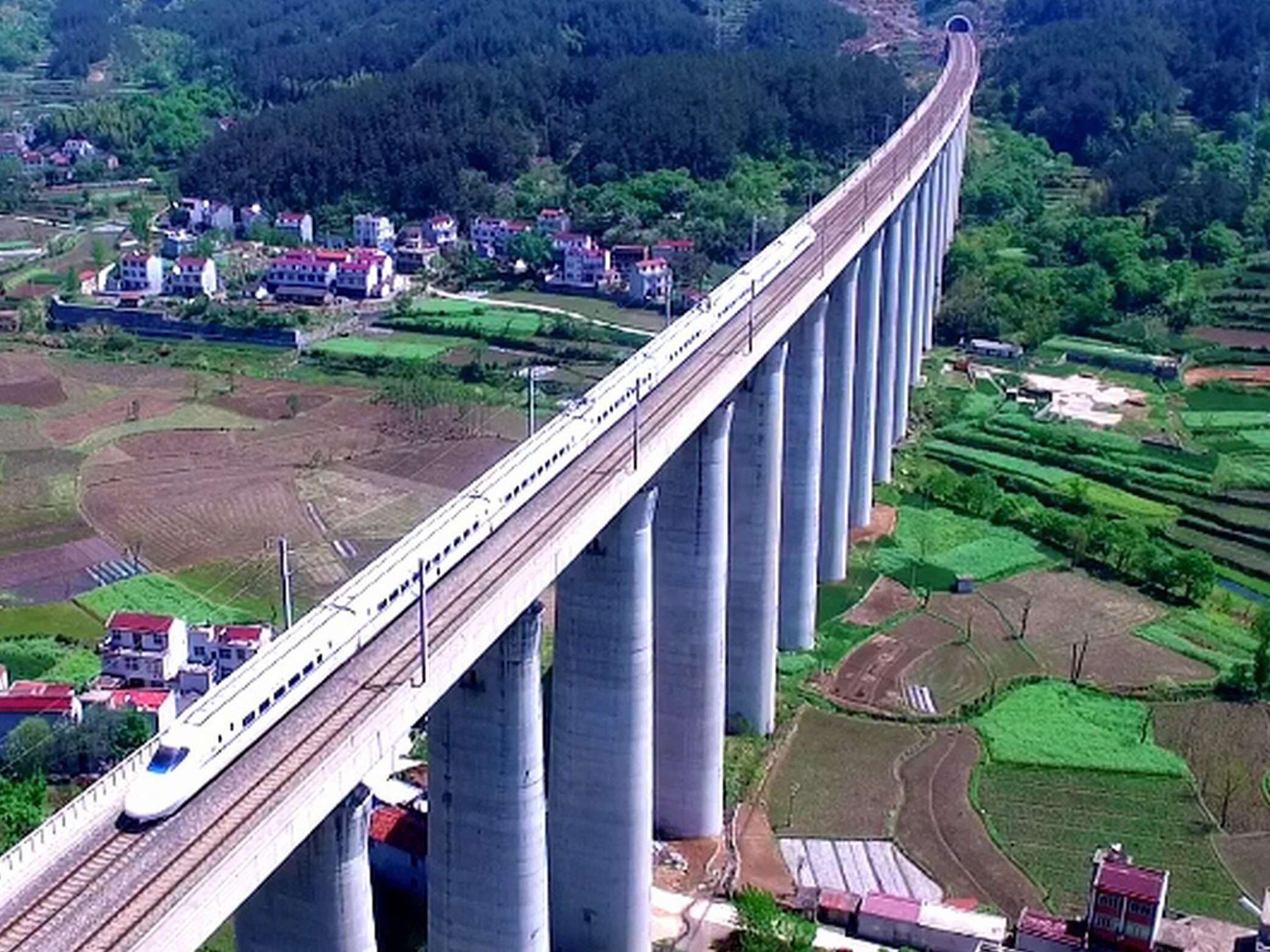
- In the 14th Five-Year Plan, Wuhan will form a high-speed rail hub network in twelve directions
The construction of integrated comprehensive transportation infrastructure in the Yangtze River Delta brings the coordinated development of regional transportation to a new level. Recently, Wuhan City announced its work plan for high-standard urban construction. The plan proposes that by 2025, Wuhan will form 14 rail transit operating lines, creating a "Great Wuhan on the track"-implementing Erqi Road to Tieji Road crossing the Yangtze River channel, Baishazhou Highway and Railway Bridge, embankment corner crossing river channel, etc. Through the Yangtze River passage project, construction of Jianghan Eight Bridges, Jianghan Nine Bridges, Jianghan Ten Bridges and other passages across the Han River.

The plan proposes to build a national railway network center. With Wuhan as the center, speed up the formation of a “super-meter-shaped” high-speed rail hub network with “two verticals, two horizontals and two obliques” reaching twelve directions, and build the Wuhan urban circle and the urban railway transportation circle of the middle reaches of the Yangtze River, and strive to 2025. The city's total railway mileage exceeds 1,000 kilometers. The layout of "five main and two auxiliary" passenger stations in Wuhan Station, Hankou Station, Wuchang Station, Hanyang Station, Wuhan Tianhe Station, Wuhan East Station, and Yangtze River New District Station will be completed, forming a complete double railway passenger and freight transport hub in the inland area.

Build an aviation international gateway hub. Promote the joint development of Wuhan Tianhe International Airport and Ezhou Huahu Airport, enhance the function of Wuhan's regional aviation hub, and build a "dual hub" for civil aviation passenger and cargo portals. By 2025, the passenger throughput of Wuhan Tianhe International Airport will reach 42 million passengers per year.

Build an important hub of the national highway network. Guided by the construction of the Wuhan City Circle (Sixth Ring Road), promote the expansion and expansion of external passages such as Wuhan University, Wuyang, and Yanjiang, and strive to start the medium and long-term highway network planning projects of Wutian, Wusong and other countries, and accelerate the construction of the "Sixth Ring and 20th Ring Road". The integrated expressway network of "four-shot multiple-link" high-grade highways has reached the city-wide "30-60-90" 3 circle aging targets (30 minutes for main city interconnection, 60 minutes for city area radiation, 90 minutes for metropolitan area direct access), Realize the complex transportation corridors along the urban development axis with Wuhan as the core, such as high-speed highways, urban rails, intercity railways, and municipal railways.

Speed up the construction of metro cities. Fully implement the construction plan for the fourth phase of rail transit and adjustment of the starting point of related lines, and plan to start the fifth round of construction planning. By 2025, a rail transit network system with 14 operating lines and a total length of 600 kilometers will be formed, moving towards the "Metro Network Era". The 800-meter subway station will cover 47.6% of the population in urban development areas and 44.8% of the jobs will be covered. Rail transit will account for public transportation. The proportion of passenger traffic reached 55%. Build a multi-level rail transit network with the "four networks integration" of the Wuhan city circle trunk railway, intercity railway, municipal railway, and urban rail transit, build a 1-hour commuter circle with rail transit as the backbone, and form a "city area door-to-door city circle" The express transportation system from district to district will create a “Big Wuhan on the track”.

In addition to highway and rail transit, Wuhan will also speed up the construction of river-crossing bridges on major traffic routes to promote smooth flow of the city, and implement passages across the Yangtze River from Erqi Road to Tieji Road, Baishazhou Highway and Railway Bridge, and embankment cross-river passages, etc. In the project, the eighth Jianghan Bridge, the Ninth Bridge and the Tenth Jianghan Bridge will be constructed to pass the Hanjiang River, and the layout of the passages across rivers and lakes will be balanced. The traffic capacity of the main urban area across the Yangtze River will be increased by 25%, and the traffic capacity across the Han River will be increased by 50%. Editor/Xu Shengpeng
Comment
 Praise
Praise
 Collect
Collect
 Comment
Comment
 Search
Search














Write something~